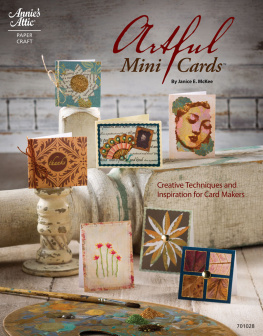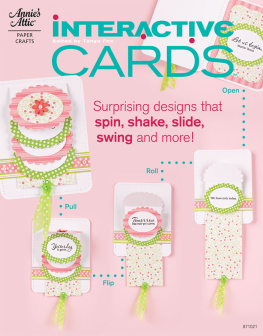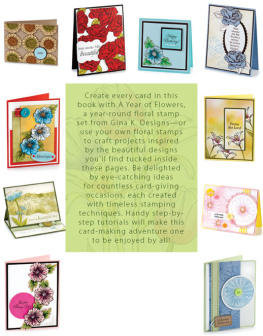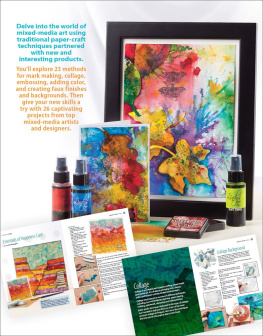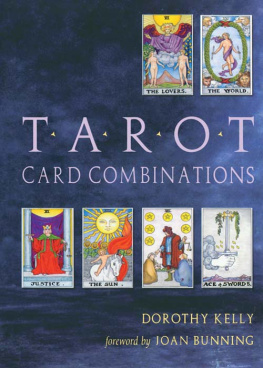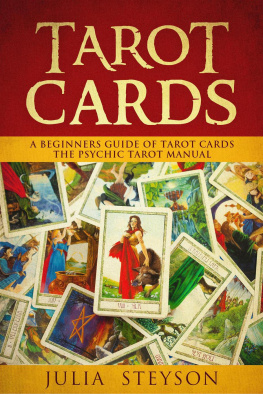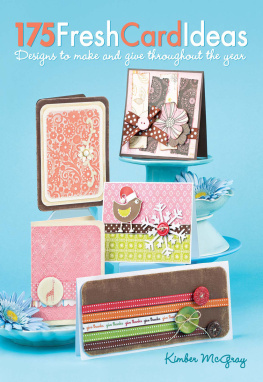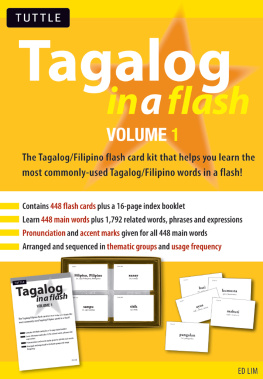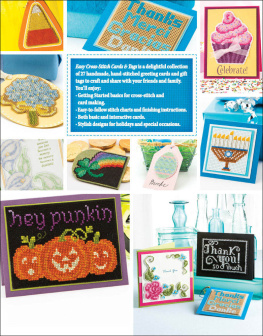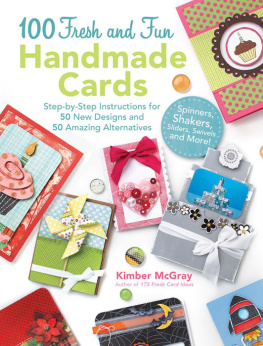
Artful Mini Cards
EDITOR Tanya Fox
CREATIVE DIRECTOR Brad snow
PUBLISHING SERVICES DIRECTOR Brenda Gallmeyer
MANAGING EDITOR Brooke smith
COPY SUPERVISOR Deborah Morgan
COPY EDITORS Emily Carter, Rebecca detwiler
TECHNICAL EDITOR Corene Painter
PHOTOGRAPHY SUPERVISOR tammy Christian
PHOTO STYLISTS Tammy Liechty, Tammy steiner
PHOTOGRAPHY Matthew Owen
PRODUCTION ARTIST SUPERVISOR Erin Brandt
PRODUCTION ARTIST Nicole Gage
PRODUCTION ASSISTANTS Marj Morgan, Judy neuenschwander
ISBN: 978-1-59635-377-0
Printed in USA
1 2 3 4 5 6 7 8 9
Artful Mini Cards is published by DRG, 306 East Parr road, Berne, IN 46711. Printed in usA. Copyright 2011 D RG. A H rights reserved. This publication may not be reproduced in part or in whole without written permission from the publisher.
RETAIL STORES: if you would like to carry this pattern book or any other D RG publications, visit DRGwholesale.com.
Every effort has been made to ensure that the instructions in this publication are complete and accurate. We cannot, however, take responsibility for human error, typographical mistakes or variations in individual work. Please visit AnniesCustomerCare. com to check for pattern updates.
Contents













Foreword
Sometimes my husband, David, takes his lunch to work. In the past ten years or so, he has found little love notes from me in the form of miniature cards when he opens his brown paper sack. Reluctant to throw them out, he started collecting them in a drawer in his desk. Soon the cards were taking up too much space. David then bought a bulletin board to put up on one of his office walls so he could hang the ever-growing stack of cards there. It became a conversation piece and the inspiration for this book.
At first, I made miniature cards in order to use up my leftovers from other card-making projects. Much thought and care was taken to create a small art piece to act as the perfect gift card for a package. Now, I find them to be just as intriguing and entertaining to make as larger cards. With the 12 different tutorials found in this book, as well as the numerous samples shown, I hope you will be inspired to fashion your own little works of art for any number of occasions.
The techniques discussed here range from monoprinting and working with rice paper to incorporating fabric and hand-stitching onto mini cards. In addition to tried-and-true methods such as rubber stamping, newer ideas, such as working with artfully printed paper napkins, are shown. This book will send you to the garden to collect botanical specimens for pressed-flower cards as well as remind you to check out the past for vintage images that work well in card making. Its fun and worth exploring.
About the Author
I was born in Louisiana and have been a resident of Texas much of my adult life. Ive been married to my wonderful husband, David, for over 35 years. We are the parents of four dear children: Marc, Meaghan, Roane and Donald (and love our daughter-in-law, Camellia).
Ive been interested in paper since the age of 5 or 6whenever a relative would give me a quarter, Id head to the dime store to buy a little writing tablet or pack of paper. A few years later, fabric came into my line of sight in learning to make doll clothes. Of course, Id always enjoyed paper dolls too.
After learning to make garments in high school home ec, I majored in Home Economics in college. Sewing clothes for the family, making quilts and experimenting with embroidery were all a creative joy for me. In the 1990s, I became interested in nature crafts and papermaking, which led to card making. Its been exciting and fun all along the way.
Coloring Rice Paper

Imagination is the beginning of creation. You imagine what you desire,you will what you imagine and at last you create what you will.
George Bernard Shaw
When I was experimenting with creating handmade paper back in the 90sthe kind thats made from recycled gift wrap, unused fast food napkins, credit card offers, etc. (torn and turned into pulp in a household blender)nearly every type of plant matter was fair game. In addition to the usual flower petals and grasses, I tried overripe strawberries, pine needles, cantaloupe rinds and the tough ends of asparagus stalks. While not everything produced great-looking paper, there were enough successes (loved the blueberry paper!) to inspire further experimentation.
At one point, while looking in the refrigerator for possibilities, I spied some leftover rice. Id heard of rice paper but had never actually seen or used it. Why not? I thought to myself.
Let me just say: Do not try this at home! It was a disaster. The goopy mess adhered to my screen and couching sheets like glue and absolutely would not form itself into a sheet of paper. Months later I read somewhere that rice paper was actually a misnomer as the paper had nothing to do with rice.
Well, that is not exactly true. According to www. rice-paper.com, original rice paper had its beginnings in the Tang Dynasty (A.D. 618-907) and was made from rice straw and wingceltis bark in the Xuancheng area of China. It was known as Xuancheng paper and was valued by calligraphers and sumi-e artists for its strength and durability.
Next page
